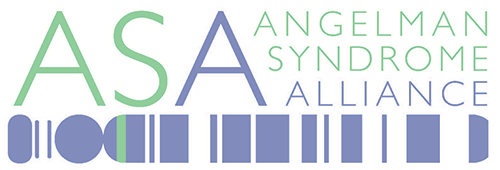Angelman Syndrome is a rare genetic condition first identified in 1965 by British doctor, Harry Angelman, from whom it also gained its name. The syndrome - originally called 'Happy Puppet Syndrome' because of the characteristic happy demeanour and stiff jerky movements of the children - was renamed Angelman Syndrome in 1982. During the 1980's advances in genetic medicine made it possible to diagnose increasing numbers of cases and also to start identifying the cause. In simple terms, it is a chromosome disorder that causes severe learning difficulties. It is now known that irregularities in Chromosome 15 are responsible for AS. However it is also known that there are several different irregularities that can occur in Chromosome 15, all of which result in a diagnosis of AS. Angelman Syndrome is not a disease, it is a neurological disorder that causes severe learning difficulties, and although those affected have a normal life expectancy, they will require looking after throughout their lives. Most AS children are diagnosed between the ages of 3 & 7 when the characteristic physical and behavioural features become evident.
The characteristics used for diagnostic criteria are listed below:
Consistent (100%)
- Developmental delay, functionally severe
- Speech impairment, no or minimal use of words, receptive and non-verbal communication skills higher than verbal ones
- Movement or balance disorder, usually ataxia of gait and/or tremulous movement of limbs
- Behavioural uniqueness: any combination of frequent laughter/smiling; apparent happy demeanour; easily excitable personality, often with hand flapping movements; hypermotoric behaviour; short attention span
Frequent (more than 80%)
- Delayed, disproportionate growth in head circumference, usually resulting in microcephaly (absolute or relative) by age 2
- Seizures, onset usually by 3 years of age
- Abnormal EEG, characteristic pattern with large amplitude slow-spike waves (usually 2-3/s) facilitated by eye closure
Associated (20-80%)
- Flat occiput (bone at the back of the skull)
- Occipital groove
- Protruding tongue
- Tongue thrusting; suck/swallowing disorders
- Feeding problems during infancy
- Prognathia (protruding lower jaw)
- Wide mouth, wide-spaced teeth
- Frequent drooling
- Excessive chewing/mouthing behaviours
- Strabismus
- Hypopigmented skin, light hair and eye colour (compared to family), seen only in deletion cases
- Hyperactive lower limb deep tendon reflexes
- Uplifted, flexed arm position especially during ambulation
- Increased sensitivity to heat
- Sleep disturbance
- Attraction to/fascination with water






